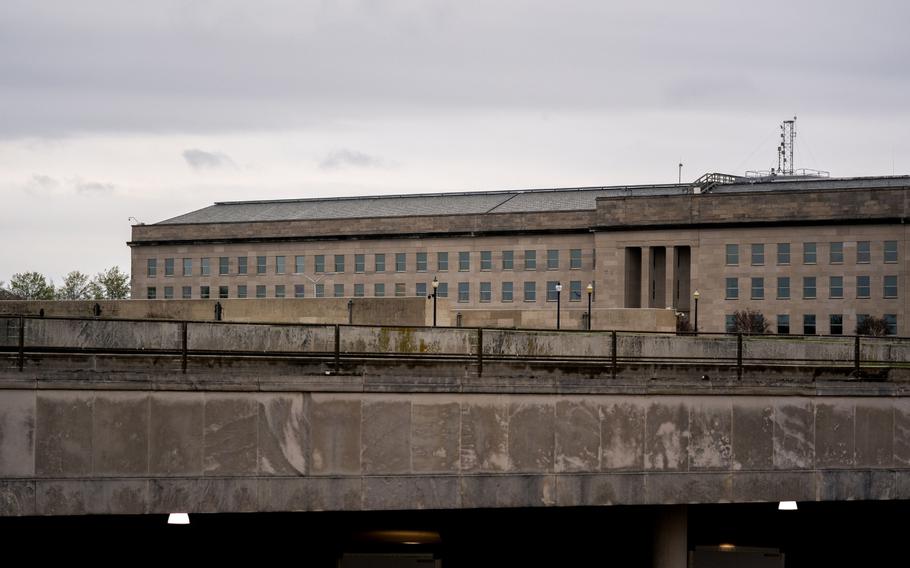
The Pentagon building is seen in Arlington, Va., on April 9, 2021. (Stefani Reynolds/Bloomberg)
The Pentagon doesn’t have enough wide-open spaces on its missile test ranges to thoroughly evaluate new hypersonic weapons for the U.S., according to the military’s testing office.
It also lacks key capabilities to adequately test the threat from incoming versions that adversaries including China and Russia are developing.
The hypersonics evaluation, contained in the non-public version of the Pentagon test office’s annual report obtained by Bloomberg News, is a reality check on the Defense Department’s plans to boost spending and speed development of the new weapons that can travel five times the speed of sound and maneuver in flight like a cruise missile.
The report comes as Defense Secretary Lloyd Austin and his deputy, Kathleen Hicks, are scheduled to meet virtually Thursday with about 14 defense contractor CEOs for a discussion “on hypersonic development” and other issues, according to spokesman John Kirby. “It is part of a regular drumbeat.”
The report flags a range of other bottlenecks in U.S. efforts to prepare for the next-generation weapons.
Existing U.S. test ranges from Hawaii to Virginia that have corridors clear of civilians and commercial air traffic will be overwhelmed by an increase of more than 50% in demand by 2025 unless they’re expanded, according to the assessment labeled “Controlled Unclassified Information.”
In addition, the report found that the Defense Department must improve modeling and simulation of attacks by adversaries because it’s unable to adequately show that it could achieve the necessary “early detection of incoming missiles and effective tracking” and interception.
Nor, the testing office said, can the Pentagon “adequately represent” in testing that it could successfully stage hypersonic strikes against targets on land and sea that are protected by “radar and other sensors.”
The report outlines nuts-and-bolts testing challenges that have rarely been acknowledged and must be overcome. The Pentagon’s inspector general is tackling similar issues in a review begun in April 2020 that’s focused on the existing infrastructure for ground testing.
Heidi Shyu, the Defense Department’s assistant secretary for research and engineering, told reporters last month that the upcoming fiscal 2023 budget’s five-year plan contains “a significant increase in our test infrastructure.”
Pentagon officials, the military services, think tanks and corporate officers — whose companies stand to make billions off the weapons — have focused mostly on the need to catch up with China and Russia’s hypersonic programs. The Pentagon’s fiscal 2021 budget proposed spending $3.2 billion, up $400 million from what Congress approved in 2020. The Pentagon requested $3.8 billion for this fiscal year. It’s part of $12.6 billion in planned hypersonics spending through 2025.
The testing office outlined the potential for increasing range capacity at the Pacific Missile Range Facility on Kauai in the Hawaiian Islands; Kwajalein Atoll; White Sands, New Mexico; in Shemya, St. Paul Island and Bethel, Alaska; Wallops Flight Facility in Virginia, and Eglin Gulf Test and Training Range, Florida.
As an example, the testing report found that with “minor” upgrades, “an East Coast flight-test corridor at Wallops, with impact in the broad ocean area and Eglin, with launch and impact in the Gulf of Mexico, could also mitigate the flight test corridor shortfall.”
Another example obliquely referenced how difficult the problem could be to solve.
According to the report, the White Sands Missile Range “could potentially provide an additional land-based impact site for hypersonic missile flight if remote launch sites were available” on the range and “if the safety concerns associated with launching the missiles over populated territory and de-confliction with civilian air traffic control could be satisfactorily resolved.”